Being a mom, I always try to make the tasty and same time, nutritious food for my family. But not always happening either running out of the key ingredients or the taste of the ingredient does not like my girl.
So substituting is a great option, but it is not always easy to find the right substitution. I recently tried to replace Millet flour with almond, buckwheat, oat, and other different kinds of flour to know which are the best flour.
If you are looking for a good Millet flour substitute, I recommend giving almond flour a try. It is easy to find and has a great flavor and texture. Also gluten-free. Readily available in most grocery stores.
Try out my other 6 substitutes for millet flour and make delicious foods.
By The Way…
What is Millet Flour? What is millet flour made out of?
Millet flour is a type of flour that is made from ground millet. Millet is a grain that is high in protein, fiber, and minerals, making it a healthy choice for flour.
Millet flour can be utilized in place of other kinds of flour in most recipes. It has a slightly nutty flavor and can be used to make bread, pancakes, cookies, and other baked goods.
Millet flour is also gluten-free, making it a good choice for people who are gluten intolerant.
Best Millet Flour Substitutes
1. Substitute OAT FLOUR for Millet Flour
If you are looking for a gluten-free baking alternative, try substituting oat flour for millet flour. Oat Flour is made of finely ground oats, which makes it an excellent substitute for wheat flour in many recipes.
Additionally, oat flour has a high protein content and a slightly sweet flavor, which makes it a perfect fit for many baked goods.
Oat flour is a perfect option for making pancakes. It gives the pancakes a slightly nutty flavor and a slightly denser texture.
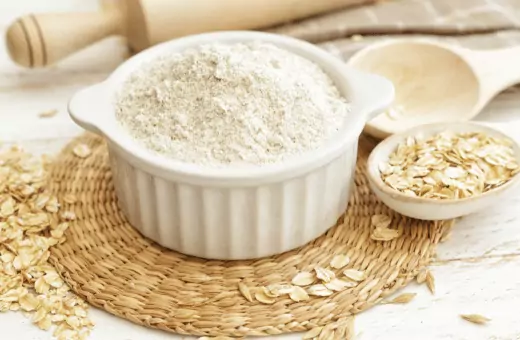
Start by substituting 1/4 cup of oat flour for every 1/4 cup of millet flour called for in a recipe. If the recipe doesn’t call for any wet ingredients, add 1/4 cup of water to the mixture. If the recipe does call for wet ingredients, add an extra 1/4 cup of water to adjust for the added moisture from the wet ingredients.
Oat flour used in baking is becoming more popular these days because it is gluten-free and has a high-protein content. So, the next time you are in the mood for something sweet, give oat flour a try!
2. Millet flour substitute WHEAT FLOUR
A possible substitution for millet flour in baking is wheat flour. Nevertheless, it is vital to note that the results may not be the same as when millet flour is used, so it is best to experiment with different ratios to find what works best for your recipe.
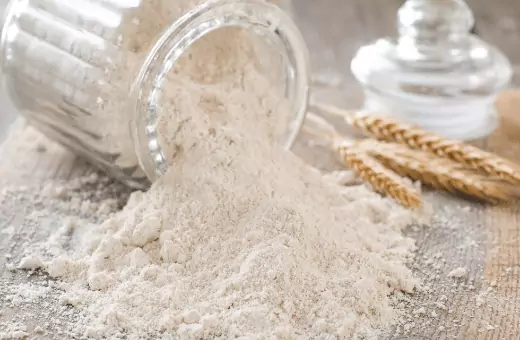
Wheat flour has an increased gluten content than millet flour, so it may make baked goods more dense or chewy.
You can try substituting up to one cup of the wheat flour in a recipe with 1/2 cup millet flour, or start with a smaller amount and increase if needed. Be sure to mix the two flours together well before adding them to your batter or dough.
3. AMARANTH FLOUR- A Good Substitute for Millet flour
Amaranth flour is another right choice to use for millet flour. Like rice flour, amaranth flour is gluten-free and has a neutral flavor that makes it a good choice for baked goods like pancakes, waffles, and muffins.
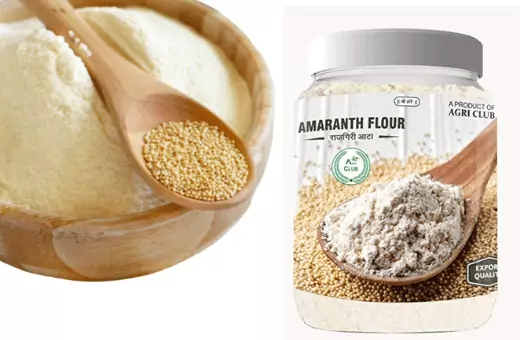
Use 1 cup of amaranth flour for every 3 cups of millet flour in a recipe.
Amaranth flour is made of ground, dried amaranth seeds. The flour is light brown in color and has a slightly nutty flavor. It can be substituted for up to 25% of the all-purpose flour in a recipe.
You can use amaranth flour as a thickener for soups and sauces. Amaranth flour is available in most health food stores.
4. Millet flour substitute RICE FLOUR
Rice flour is made of finely ground white rice and is a good substitute for millet flour in most recipes. Rice flour is available at most grocery stores.

If you are looking for a gluten-free flour alternative, rice flour is a good option. It can be used to make pancakes, waffles, muffins, and cookies. Use one cup of rice flour for every cup of millet flour called for in a recipe.
You can also utilize it as a thickener for sauces and gravies. Rice flour is a good choice for people with celiac disease or gluten sensitivities.
Read More- Best Mochiko flour substitutes
5. SORGHUM FLOUR- Decent Alternative to Millet Flour
Sorghum flour is another great choice for millet flour when making pancakes. It has a similar taste and texture, but it is a little bit sweeter.
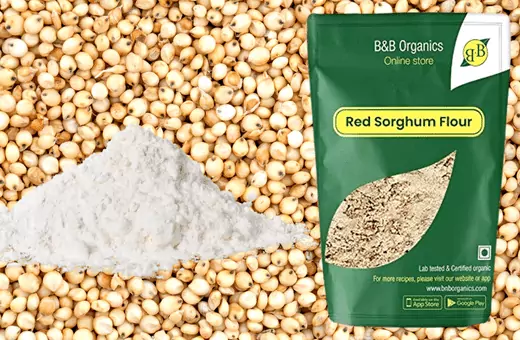
Sorghum flour has a high protein content, making it a great choice for people who are looking for a nutritious breakfast. It’s also gluten-free, so it is ideal for people who have Celiac disease or gluten sensitivity.
Take one cup of sorghum flour for every one cup of millet flour in your recipe. You may require adding slightly more liquid, as sorghum flour absorbs more moisture than millet flour.
If you are looking for a nutritious and delicious breakfast option, give sorghum pancakes a try! You can find sorghum flour in most health food stores.
6. BUCKWHEAT FLOUR- Great Replacement for Millet Flour
Buckwheat flour is another good stand-in for millet flour in gluten-free baking. It has a similar texture and flavor, and it can be found at most health food stores.

Buckwheat flour is obtained from the dried and ground kernels of buckwheat. It is a type of cereal grain but is not related to wheat.
Buckwheat flour is a fantastic source of fiber, protein, and minerals such as magnesium, potassium, and zinc.
Buckwheat flour is good for making bread, pancakes, waffles, and other baked goods.
When substituting buckwheat flour for millet flour in a recipe, use the same amount as the recipe calls for. Buckwheat flour is also available as a pre-made mix with other gluten-free flour. If you can’t find buckwheat flour, try other options or check the best buckwheat flour substitutions.
Buckwheat has a strong flavor that some people may not like. If you are new to using buckwheat flour, start by using it in small amounts and raise the amount as you get accustomed to the flavor. You can also mix it with other gluten-free flours to reduce the flavor.
7. ALMOND FLOUR – Most Relevant Millet Flour Substitute
Almond Flour is our last and one of the most favorite substitutions for millet flour for people who are gluten intolerant. Moreover, it’s an excellent source of protein, fiber, magnesium, and vitamin E.
Almond flour can be used to make pancakes, waffles, bread, muffins, cookies, and even pizza crust!
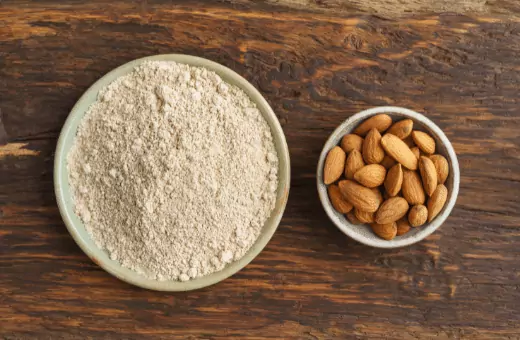
Use 1 cup almond flour for every 1/4 cup millet flour in recipes. If a recipe calls for more than 1/4 cup millet flour, you can simply double or triple the almond flour amount.
Here is one of our favorite recipes for almond flour pancakes:
Ingredients:
- 1 cup almond flour
- 1/4 teaspoon baking soda
- 1/4 teaspoon baking powder
- 1/4 teaspoon salt
- 1 egg, beaten
- 1 tablespoon honey
- 1 tablespoon olive oil or melted butter
- 1/2 cup almond milk, more if needed
- Toppings of your choice (fresh fruit, nuts, jam, etc.)
Instructions:
1. Combine the almond flour, baking soda, baking powder, and salt in a big mixing bowl.
2. Combine the honey, egg, olive oil or butter, and almond milk in a separate bowl. Pour the wet components into the dry ingredients and mix well.
3. If the batter is too dense, add more almond milk until desired consistency is reached.
4. Heat a big griddle or frying pan over medium heat and spray with cooking spray. Scoop 1/4 cup of batter onto the griddle and cook for 2-3 minutes per side, or until golden brown. Serve with your favorite toppings. Enjoy!
Substitute Millet flour in Gluten-Free Baking
· Oat Flour
· Amaranth Flour
· Buckwheat
· Sorghum Flour
· Almond Flour
Substitute for millet in a bread recipe
The best substitute for millet flour when making bread is oat flour and almond flour. The bread has become denser, but it will be more flavorful and healthier.
You can also use a combination of different types of flour to make your bread. If you are looking for a gluten-free option, then you can use rice flour or buckwheat flour. These flours will give your bread a slightly different flavor and texture, but they will still be delicious.
When it comes to baking bread, there are endless possibilities, so feel free to experiment with different combinations of flour until you find the perfect recipe for you.
How do you make millet flour at Home?
To make millet flour, you will need to dry and grind the millet. You can either do this in a food processor or a blender.
If you’re utilizing a blender, you may want to start with smaller amounts and work your way up to grinding a full cup of millet.
Once the millet is ground, store it in an airtight container in the fridge or freezer. Millet flour can be utilized in place of wheat flour in most recipes. Enjoy!
Read More- Sorghum flour substitutes | Gluten-Free & Healthy
FAQs Related to Millet Flour & Its Alternatives
Q1. What is millet similar to?
Millet is similar to other whole grains such as wheat, barley, and rye. Like these other grains, millet is a good source of dietary fiber, which can help with bowel regularity and digestion.
Millet also contains important vitamins and minerals, including thiamin, niacin, magnesium, and phosphorus.
Q2. Can I substitute almond flour for millet flour?
There’re a few things to consider when substituting almond flour for millet flour. First, make sure that the recipe you are using calls for almond flour specifically, as almond and millet flours have different properties.
*Almond flour is denser and has a nuttier flavor than millet flour, so it may not work in all recipes.
Additionally, almond flour can be more expensive than millet flour, so you may want to experiment with different ratios to find the best substitution for your needs.
Overall, almond flour and millet flour can be used interchangeably in some recipes. Still, it is important to take into account their individual properties when making a substitution.
Q3. Can I use coconut flour instead of millet flour?
As the two flours have different properties and uses, I don’t think coconut flour doesn’t suit instead of millet flour.
However, in general, coconut flour is a denser flour than millet flour, so it may not work as well in recipes that rely on millet flour for lightness and volume.
Coconut flour is also rich in fiber and fat, so it may add more richness and flavor to recipes. If you’re interested in trying out coconut flour, start by substituting a small amount of it for millet flour in your favorite recipes, and adjust as needed.
Q4. Can millet flour be substituted for brown rice flour?
Millet flour can be substituted for brown rice flour in most recipes. Still, there may be some subtle differences in the flavor and texture.
Millet flour is a little bit drier and nuttier than brown rice flour, so you may require to add some more liquid to your recipe if you switch flours.
You can also try substituting a portion of the millet flour with another gluten-free flour, like almond or buckwheat flour, to add some moisture back into the recipe.
Q5. Can I substitute millet flour for quinoa flour?
Every flour behaves differently in recipes.
In general, quinoa flour is denser and has a slightly nutty flavor. In comparison, millet flour is lighter and has a more delicate flavor.
If you want to try substituting millet flour for quinoa flour in your recipe, start by using a 1:1 ratio and adjust as needed. Good luck!
Q6. Can I use all-purpose flour instead of millet flour?
If you don’t have access to millet flour, you can use all-purpose flour as a substitution.
All-purpose flour will give your recipe a slightly different flavor and texture, but it will still be edible.
Just ensure to follow the recipe closely so that your end result is as intended. Happy baking!

